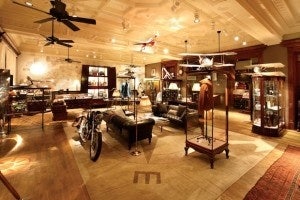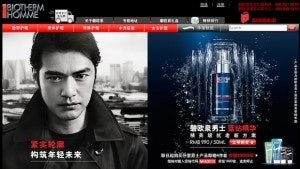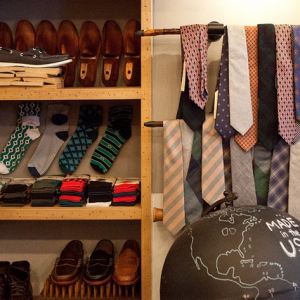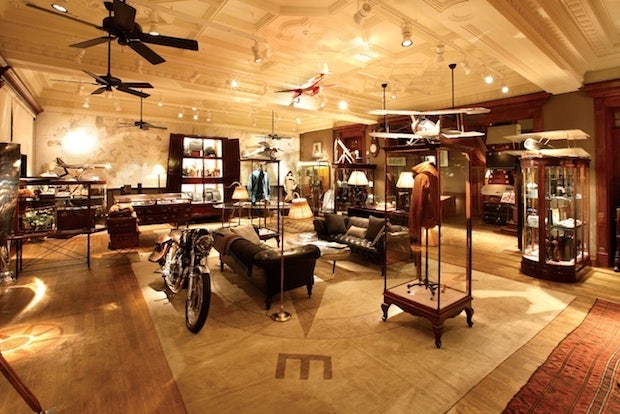Tastes Extending Beyond Cars And Watches#

The Chinese male shopper has long been the backbone of China’s luxury market, as government officials and businesspeople alike have continued to propel the controversial tradition of high-end gift-giving. But while we anticipate male consumers to maintain their perennial demand for watches and automobiles this year (regardless of recent anti-corruption pushes), a shift is clearly afoot. Recent studies have repeatedly indicated that
the rising number of upper-middle-class male shoppers (with annual salaries averaging around 510,000 yuan (US$81,800)) are showing a greater interest in more individual luxury segments such as apparel, leather-goods, and personal accessories. This is definitely a trend that brands should keep in mind when planning for the year ahead.
Adding to Microsoft Advertising’s “Luxury Connoisseurs” study, which found that Chinese male consumers are purchasing more luxury items for themselves rather than others, Bain & Company recently indicated that between 2005 and 2009, the luxury goods market for men in China grew by 48 percent. By 2011, sales data at Beijing's SOGO Department Store showed that men contributed 30 percent to its total sales, yet their individual expenditure was two to three times higher than female customers.
While the data fails to detail whether these shoppers were buying more for themselves, or with the intention of gift-giving to significant others or business acquaintances, these middle-class male consumers have clearly become an important and growing buyer base. Overall in China, wealthy male shoppers accounted for two-thirds of luxury purchases in 2011, a figure that has continued to grow in the past year.
Explaining this growing trend, Sina Style recently observed changing consumer behavior among male shoppers. Gift-giving is no longer the singular driver of male luxury purchases, as Coach China president & CEO Jonathan Seliger recently observed. Said Seliger, “Chinese men have become even more enthusiastic about following fashion trends and have started attaching more importance to their outward appearance through the use of ornaments and personal decoration.” These personal “ornaments” and “decor” include watches, neckties, bags, suitcases, eyeglasses, jewelry and even skincare products. According to Bain & Company, “Accessories have become the core category in personal luxury goods. For the first time, leather-goods and shoes have become the largest piece of the market, now at 27 percent of sales. The category is seeing increasing levels of male spending, and increasing interest in higher quality, higher price items."

What makes this increasingly individualistic male consumer segment an important one, however, is their consumer psychology. Contrary to female shoppers who, according to LS:N Global Research, exhibit more “emotional spending habits and are more vulnerable to the impact of an economic crisis,” male shoppers tend to be a “more rational and stable performance consumer market,” which is good news for brands that have developed new strategies to cater to their male shoppers. Furthermore, as VLOV CEO and chief designer Qingqing Wu recently told Jing Daily, men tend to stick to a smaller group of preferred brands than their female counterparts, as “standards and expectations [among men] of the overall quality of a brand are very high. Moreover, men tend to be more loyal to their brands of choice.”
Looking ahead in 2013, luxury brands in China or those planning to be in China should begin to think of more effective ways to target this evolving male market, if they haven’t already. Brands such as Coach, Ferragamo, Bottega Veneta, and Lanvin have already taken steps to accommodate the rising personal consumption of Chinese male consumers, expanding their product range to items that cater to gents and even taking a page from their operations in the West and setting up specialty stores in the Greater China region. As Coach's Seliger puts it, "In China, quite often it is women who buy our products for men. So we are implementing the model of dual-gender sales and we are also opening more dedicated men’s stores in major cities.”

Dedicated men's stores are something we're sure to see more of in the years ahead, particularly in top-tier cities. According to the Wall Street Journal, Ferragamo was one of the first high-end brands to open a men's-only store in China, while Bottega Veneta recently opened its second men’s store in Shanghai, as have Club Monaco and Lanvin in Hong Kong. Following the same blueprint as its London and Tokyo outposts, Dunhill opened "Homes" in Shanghai and Hong Kong to offer a full lifestyle experience. While mainland China is catching up, Hong Kong has a head start on the men's boutique front, as the city boasts respected sartorial standouts like
Moustache#
and
the Armoury#
, as well as world-class designers such as
Anthony Hill#
and tailors like
Ascot Chang#
.
While the opportunity presented by this big-spending segment is clear, the challenge for retailers is even clearer: with more affluent male shoppers walking through the door, product lines must be clear, diverse, and inspired. At the same time, customer service and store experience must be decidedly pour les hommes.
